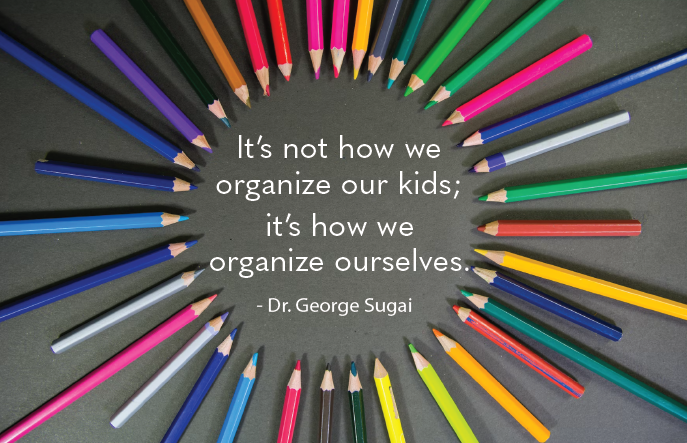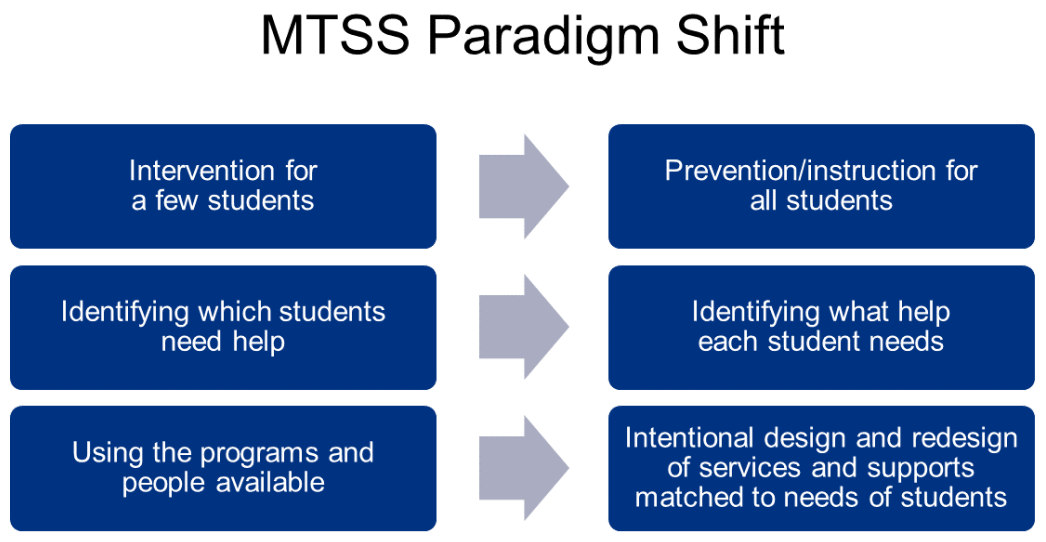At our most recent meeting of Inclusionary Practices Cadre members, OSPI shared a presentation about the role of Multi-Tiered System of Supports (MTSS) in our work. The emphasis was on considering and including the needs of all students, rather than a select few.
This newsletter highlights some of our key takeaways from that presentation along with our new self-paced training on partnerships between Special Education and Career Technical Education. Throughout this next year, we look forward to exploring ways to center our inclusionary practices work within the framework of MTSS to support students in achieving their post-school goals.



Inclusion and Multi-Tiered System of Supports (MTSS)
It all begins with the educators! Inclusion requires that teachers believe that we are all better off when students learn together. The work of inclusionary practices (partnered with Career Technical Education) is nestled within the overall framework of the Multi-Tiered System of Supports, or MTSS.
MTSS “focuses on organizing the efforts of adults within systems to be more efficient and effective. MTSS helps to ensure students benefit from nurturing environments and equitable access to universal instruction and supports that are culturally and linguistically responsive, universally designed, and differentiated to meet their unique needs (Multi-Tiered System of Supports, OSPI).
The five core components of Washington MTSS align seamlessly with the work of inclusionary practices.
- Team-Driven Shared Leadership
- Data-Based Decision Making
- Family, Student, and Community Engagement
- Continuum of Supports
- Evidence-Based Practices
For successful inclusionary practices that benefit students with disabilities, there must be universal support for all (100%!) students. Without ever losing these universal supports, targeted and small group support is provided for some students and a smaller group of students receive intensive and individualized supports. Rather than identifying which students need help, we identify what help each student needs.
Adopting MTSS in our schools requires a paradigm shift, moving away from interventions for a few students, and moving towards prevention and instruction for all students. Instead of identifying which students need help, the focus becomes identifying what help each student needs. And instead of using the programs and people available, MTSS involves intentional design and redesign of services and supports that are matched to the needs of students.

As we at CCTS think about inclusionary practices, we will situate our work this year within the bigger framework of MTSS. As we learned from our meeting with OSPI, MTSS is not another thing to add to the plate, it is the plate.

New Self-Paced Training: Partnerships for Inclusion
CCTS’s new Partnerships for Inclusion training course features interviews with Washington state educators who share their stories and strategies for increasing inclusionary practices in their schools and districts, by emphasizing collaborations between Special Education (SE) and Career Technical Education (CTE). The five-module course is available free of charge.
- Module 1: Introduction to Inclusionary Practices
- Module 2: Developing Partnerships between SE and CTE
- Module 3: IEP Transition Plans and CTE Course Enrollment
- Module 4: Co-Teaching for SE and CTE
- Module 5: Implementing Change
